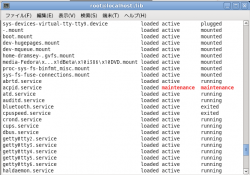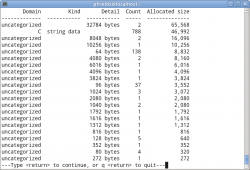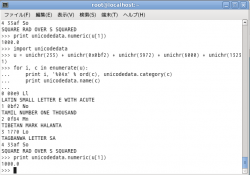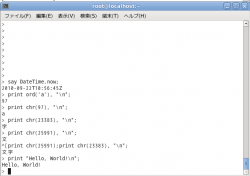Fedora is a Linux-based operating system that brings the latest in free and open source software to your desktop, laptop and server, and gives you access to thousands of different open source applications. This helpful, user-friendly operating system is built by people across the globe who work together as a community to create the Fedora Project.
Fedora is free to use, modify, and distribute, and includes software that helps you work, play, organize, and socialize. You can read more information about the Fedora Project on our Overview page.
**need banner image here**
What's New in Fedora 14?
Desktop Users
System Administrators
If you spend your day managing how other people around you use Linux, Fedora 14 is loaded with features that will make your life even easier. Whether you want to migrate new users to a Linux environment or experiment with the newest in open-source technologies to give yourself an edge, Fedora has all the tools you need.
Remote administration takes another step forward with Fedora 14's inclusion of impiutil. With many modern servers containing hardware with IPMI (Intelligent Platform Management Interface) support, managing and administering yourd hardware from afar is even easier with ipmiutil's capabilities, which increase IMPI capabilities even further with features like Serial-over-LAN and identity LED manipulation.
Are you thinking of managing servers in a cloud environment? Fedora 14 will be the first of many successive releases to come to be available on EC2. These official images will allow system administrators to try out the leading-edge features of Fedora 14 in the cloud, and experience the potential future of Fedora's downstream distributions like Red Hat Enterprise Linux.
Developers
GNUstep
Spins
Looking for something else?
Find more spins at http://spins.fedoraproject.org/ -- there's a spin for everyone, from education and gaming to science and more!
How to Get Started
Intrigued? Want to give Fedora 14 a try?
You can visit http://fedoraproject.org/get-fedora to download a LiveCD, regardless of what operating system you're running. This will give you a working version of Fedora, complete with common applications, all running off your CD drive - your hard drive won't be touched at all. And when you're ready, installation is just a click away.
Want an even more enjoyable way to use Fedora, risk-free? Try the Live USB option. You can use the same download to create a bootable USB stick so you can take Fedora with you anywhere you go. It works great with netbooks without CD drives, too. Check out the instruction page here:
http://fedoraproject.org/wiki/How_to_create_and_use_Live_USB
And if you're running Fedora 13, upgrading is easy. Refer to our handy documentation for help.
Help Make Fedora!
Want to join the Fedora community and help us make the best Linux distribution even better? Get started at http://fedoraproject.org/wiki/Join. Our diverse community from all over the globe welcomes contributors of all types. From artists to marketers to coders to testers to writers to translators and more, you too can get involved. Share what you know or help with something you've always wanted to learn; mentors are always available to help you get started. Any help is appreciated! We'd love to hear your thoughts on Fedora 14. Have a suggestion? Find a bug? Start by taking a look at the Common F14 bugs to see if it's something we know about. (That page has information on what to do if you don't find your bug, too.)
Further reading
Need more information? Check out some of these additional Fedora 14 resources, or talk with a community member in our live chat 24/7.
- Fedora 14 release announcement (http://fedoraproject.org/wiki/Fedora_14_Announcement)
- Fedora Overview (http://fedoraproject.org/wiki/Overview)
- Fedora FAQ (http://fedoraproject.org/wiki/FAQ)
- Help and Discussions (http://fedoraproject.org/wiki/Communicate)
- Fedora 14 release notes (http://docs.fedoraproject.org/en-US/Fedora/14/html/Release_Notes/)
- Fedora 14 feature profiles (http://fedoraproject.org/wiki/F14_feature_profiles)
- Fedora 14 talking points (http://fedoraproject.org/wiki/Fedora_14_Talking_Points)
- Common Fedora 14 Bugs (http://fedoraproject.org/wiki/Common_F14_bugs)
About this document
- Need PDF Version here PDF version of this document (Sources)
- Translations of this document are also available - if you make a translation, please link to it from this list!




